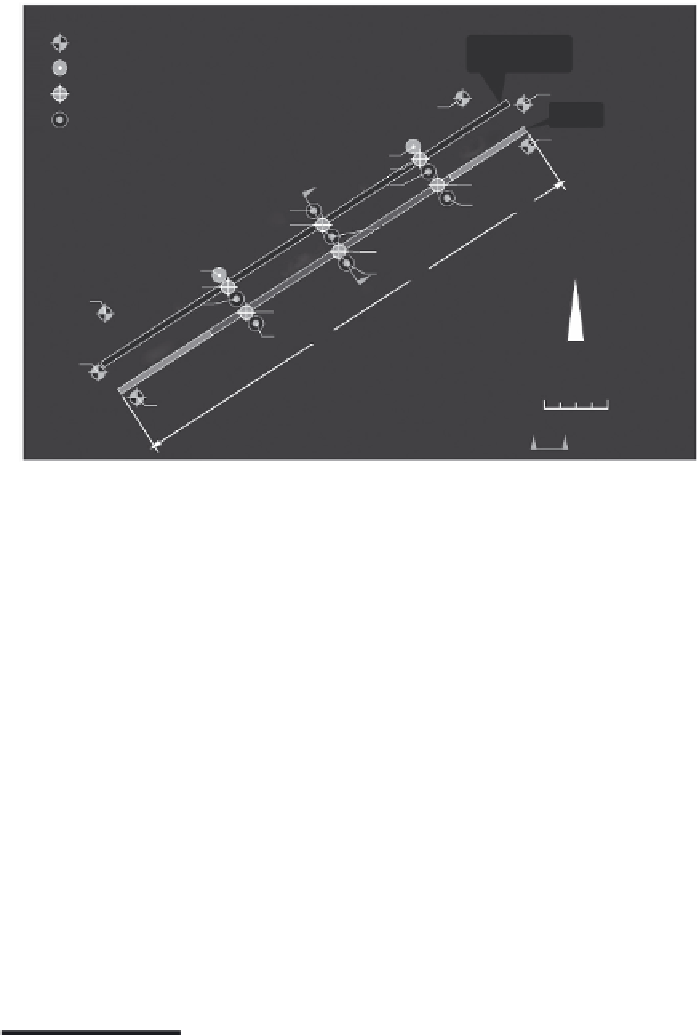Environmental Engineering Reference
In-Depth Information
Monitoring wells
1—Regional watertable
2—Multilevel
3—Multilevel
4—Multilevel and Leederville formation
Denitrification
PRB
MWG117
MWG118
ZVI PRB
MWG116
MWG108A,B
MWG102A,B,C
MWG119A,B,C
MWG105A,B,C
C
MWG111A,B,C,D
MWG107A,B,C,D
MWG101A,B,C
MWG112A,B,C,D
MWG104A,B,C
MWG106A,B
MWG110A,B,C,D
MWG100A,B,C
MWG120A,B,C
C'
MWG115
MWG103A,B,C
MWG109A,B,C,D
N
MWG114
0510 meters
MWG113
Section location
FIGURE 7.10
Long-term PRB monitoring network.
The first four monitoring rounds included sampling of wells located along
the plume centerline and downgradient of the PRBs (locations MWG109,
MWG110, MWG112, MWG107, MWG111, MWG115, MWG101, MWG106, and
MWG108) for the following suite of analytes:
• VOCs: including at a minimum chlorinated ethenes, ethanes, and
methanes; benzene; toluene; ethylbenzene; and xylenes
• Major ion chemistry: sulfate, chloride, bicarbonate, calcium, magne-
sium, sodium, potassium, and alkalinity
• Nitrate, nitrite, ammonia, and Kjeldahl nitrogen
• pH, electrical conductivity, TOC, total dissolved solids
The subsequent five monitoring rounds have focused on the B series moni-
toring wells, where the majority of the chlorinated solvent mass has been
detected.
7.8 Groundwater
Groundwater levels upgradient of the remediation system have increased,
resulting in larger hydraulic gradients across the PRB system. Additionally,

Search WWH ::

Custom Search